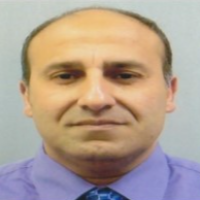Preprint
Article
Do You Speak The Mighty Triad? (Poetry, Mathematics and Music) Innovative Teaching of Mathematics
This version is not peer-reviewed.
Submitted:
23 December 2024
Posted:
24 December 2024
You are already at the latest version
Abstract
A mathematical technique to demonstrate that poetry, music, and arithmetic are indeed interconnected is undertaken in this paper. By using a mathematical approach, the proof will be logically sound and therefore believable. The current reserach explores how the three might be used in tandem in a classroom environment to help students learn after demonstrating their interconnectedness. Critical thinking and problem-solving abilities would develop as a result of the promotion of multidisciplinary ways and thinking. Examining our data from the three and have a look at their definitions. A poem is a work of writing in which the words are carefully arranged and selected for their beauty and tone. A collection of poems is called poetry. Music: The temporal arrangement of sounds using timbre, rhythm, harmony, and melody. Maths is a discipline that studies the logic of amount, shape, and order. The word "arrangement," which unites the three, makes it clear that they are related to one another. Thus, we have established their relationship. The transitive property, which states that if a ̴ b and b ̴ c, then a ̴ c, is the most effective method for demonstrating the relationship between three elements. Where " ̴ " stands for "related to." Since we are aware of the link and the approach we will take to prove it, let's start the process methodically, just like we would with a mathematical issue. This process is particularly useful when attempting to demonstrate the relationship between the three mathematically. The study of the logic of shapes, quantities, and arrangements is known as mathematics. Most potentially, some emerging open problems are provided. The paper ends with some concluding remarks combined with futuristic research pathways.
Keywords:
Subject:
Arts and Humanities - HumanitiesCopyright: This open access article is published under a Creative Commons CC BY 4.0 license, which permit the free download, distribution, and reuse, provided that the author and preprint are cited in any reuse.
Alerts
MDPI Initiatives
Important Links
© 2025 MDPI (Basel, Switzerland) unless otherwise stated





